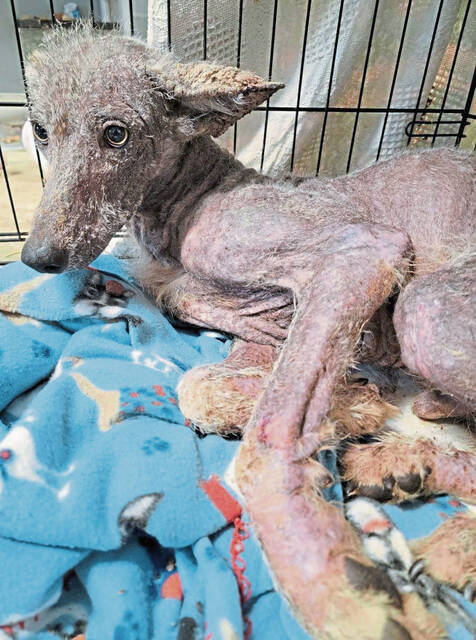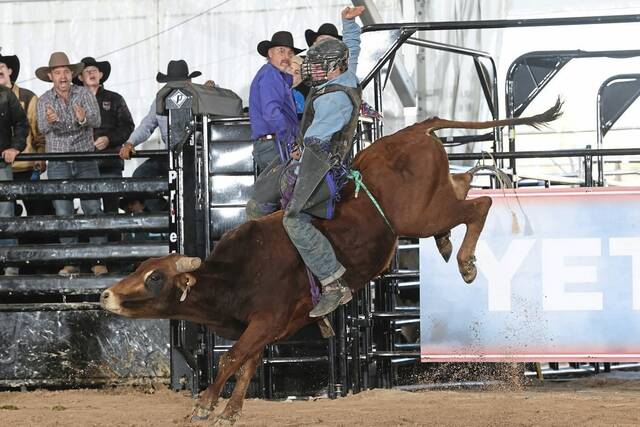Christina Eyth wasn’t exactly surprised to learn the genetic results of an animal she found shivering and scared underneath her Fairfield porch Jan. 17.
“I kind of saw it coming,” she said Tuesday. “I figured it was going to be a coyote.”
The dog-or-coyote debate was laid to rest Monday after a DNA test confirmed the animal, which was received by rehabilitators at Wildlife Works, is 100% coyote. The results made it a bit easier to stomach that the animal escaped from a Mt. Pleasant Township wildlife rehabilitation center where it was being treated for mange.
They still don’t know where the 37-pound coyote is, though. The animal got out of its cage, then apparently chewed on a rubber seal around a window until it was able to push it open and tear through the screen. Its disappearance was discovered Jan. 27.
Eyth said it was a contrast to the frightened, hungry creature she found after noticing paw prints in the snow outside her home in rural Westmoreland County. The path continued beneath her porch. When Eyth opened a basement door, she found the animal perched atop a firewood pile. She called it into the basement and set out a bowl of dog food, which the creature gobbled up.
The only thing that caused her to second-guess whether it was a dog or coyote was its calm demeanor.
“He never showed any signs of aggression or anything,” Eyth said. “It just came right in and looked scared.”
TJ’s Rescue Hideaway captured the animal in her basement and took it to wildlife rehabilitator Morgan Barron, who operates the Mt. Pleasant Township satellite location for the Youngwood-based nonprofit. Rescuers also were initially unsure whether the animal was a dog or coyote, so Barron agreed to treat its mange while they awaited DNA test results.
Mange is a contagious skin disease caused by mites that can result in hair thinning or loss, scabbing, thickened skin and itchiness.
After he escaped, it seemed more likely to Eyth she had come in contact with a wild animal, albeit one that is usually fearful of humans. Eastern coyotes typically live in forested areas and near farmland and eat a variety of food from large and small mammals to plants and insects, according to the Pennsylvania Game Commission.
Eyth rarely hears coyotes around her property and has not seen one since the rescue. While she wishes the coyote could have finished its mange treatment and gotten its fur coat back to protect it from cold weather, she knows it is where it needs to be: free.
“I understand,” she said. “He’s wild, so he just wanted to get back out.”
Anyone who comes across the animal should call Youngwood-based Wildlife Works at 724-925-6862. Rescuers encouraged residents to check their trail cameras and keep an eye out near their homes but not try to capture the coyote if they spot it.








